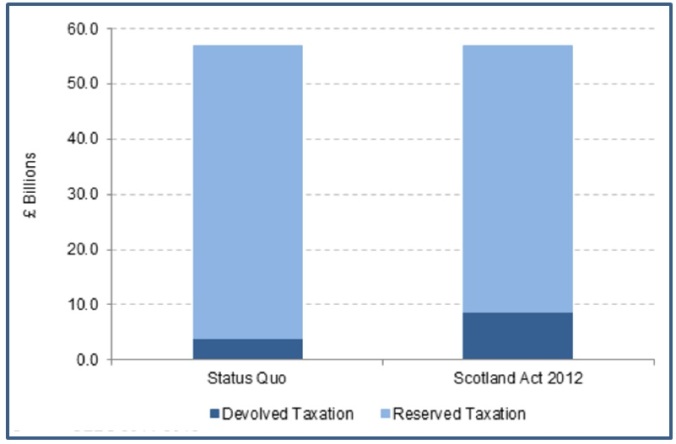Chris Game
I used, years ago, to have a whole Pol Sci 1 lecture about power and influence, their similarities and differences. By one of life’s synchronicities, I’ve been reminded of it twice in the past week. Don’t go – I’m not about to disinter it, although I will share the six-word summary that I could, if really pushed, get it down to: Power’s a tool, Influence a skill.
Actually, I will elaborate a bit, at least to the 16-word précis: I is a form of P, but P can be exercised through means other than I. Power, in other words, trumps influence, as was demonstrated in Wednesday evening’s feverish purchasing of high-price London homes following George Osborne’s introduction of stamp duty bands.
To adapt my lecture illustration: estate agents spent possibly months trying to influence wavering purchasers’ views of the great bargain their £2 million Myleene Klass garage/apartment would represent; then along comes George and suddenly the hesitants are desperate to exchange contracts by midnight and save themselves (I think) £55,000. The Chancellor had the power to change the whole deal – as could the garage owners, had they decided to drop their price. The estate agent – yes, I can feel your pity – has, at most, influence.
Power is supposedly sexy – period, and certainly sexier than influence, which is why magazines with circulation-boosting ‘Top 100’ lists will generally try for ‘Most Powerful’, even if they have to resort to sophistry. Forbes, the US business magazine, does both the World’s Most Powerful People: Putin, Obama, Xi Jinping, Pope Francis, Angela Merkel; and Most Powerful Women: Merkel, Janet Yellen (Chair, Federal Reserve), Melinda Gates, Dilma Rousseff (President, Brazil).
I’ve no argument with any of these. The Putin vs. Obama thing’s interesting, but, if you annexe Crimea and do a $70 billion gas pipeline deal with China – well, for me that’s right up there with banded stamp duty. But then at 17 in the Women’s list there’s Beyoncé Knowles, personification of the power vs. influence problem.
Sure, have her No.1 in Forbes’ Celebrity 100 List. I’d even grudgingly accept her heading Time magazine’s 100 Most Influentials, or, to be accurate, being their Top Titan – Time fudging its listing by grouping its 100 into Titans, Pioneers, Artists, Leaders and Icons, presumably to avoid, say, Miley Cyrus embarrassingly outranking Pope Francis.
But, whatever Titans are/do, Beyoncé sings, and, even if she does release her songs exclusively on iTunes, that’s essentially popularity, not power. It’s the same with cats. The cat food Friskies’ Most Influential Cat on the Internet – ‘Grumpy Cat’ (aka Tardar Sauce, and apparently it’s feline dwarfism, not perpetual pet petulance) – has 250,000 followers, which is also popularity and could even be influence, but it ain’t power.
Which brings us to the LGC100, the Local Government Chronicle’s periodic listing and ranking of the most influential people in local government – and in which we at INLOGOV have the pleasant responsibility to declare an interest, in all senses.
The LGC100 obviously differs from the Friskies 50 index, but there are similarities. First big difference is the complete absence of cats from even the long list. Second, selection is by a nine-judge panel, with “vast experience across the sector” – apart, apparently, from that of being elected members. Third, it’s forward-looking: those most likely to exert influence over the sector in the next 12 months.
Yes, the big similarity with the Friskies 50 is that it’s very definitely about influence, in the sense that I’ve been trying to suggest, rather than power. Out of hopefully excusable exuberance, INLOGOV’s official announcement stated that our Director, Catherine Staite, had been ranked the 45th “most powerful” person in the world of local government, which wasn’t the actual citation and, given that world’s diverse and highly political character, risked being potentially misleading – prompting this intendedly explanatory blog.
As I see it, LGC could have taken the sophists’ soft option, have pretended theirs is a Power Index, but, like Time, with separate groupings for mayors and council leaders, chief execs, national politicians, civil servants and officials, consultants, commentators, etc. Which would have risked being little more interesting than the proverbial wet weekend in Wigan – which, I’d better emphasise, isn’t boring at all, and moreover has a still comparatively rare female CE in Donna Hall (No 55).
Instead, they’ve taken the braver and inevitably more provocative path of having a single sector-wide set of reputational rankings, and it behoves us to recognise that those rankings are assessments of likely future influence, and not of current or recent power.
If they were current power rankings, then, whatever we might think of him, Eric Pickles’ dramatic slide from 1 in 2011 to 15 would take some explaining – although it does remain noteworthy for at least two reasons. First, all previous listings have been headed by the senior local government minister: John Healey in 2007 and 2008, and Pickles in 2011. This time, the only minister in the top 10 is Danny Alexander, Chief Secretary to the Treasury, at 7 [The PM and Chancellor are excluded from consideration, as is the Leader of the Opposition].
Second, Alexander’s relatively high position suggests Pickles’ fall can’t be attributed entirely to next May’s election, as he’s also adrift of Health Secretary, Jeremy Hunt (11), and Greg Clark, Minister for Universities, Science and Cities (13), who may also have lost their ministerial red boxes before the year’s half through. A comparable consideration – imminent retirement – surely does, however, largely explain DCLG Permanent Secretary Sir Bob Kerslake’s apparently lowly 85. Incidentally, the actual local government minister, Kris Hopkins, may or may not be grateful that LGC have extended their list from 50 to 100, as his perceived future influence has him down at 93 – just below Watford elected mayor, Dorothy Thornhill (92), and just ahead of Nan Sloane, Director of The Centre for Women and Democracy (95).
I’ve now mentioned four ranked women and six men, and it would be good if that 40% female representation or the 40% in the top 10 were reflections of the list overall. They aren’t. There are 11 women in the top 50 and 21 in the full 100, which proportionately is lower than in either 2011 or 2008 – and, yes, I do know Doncaster’s CE, Jo Miller (27), and Centre for Cities’ Alex Jones (83) are women, while Localis’ Alex Thomson (54) is definitely male.
If those figures are disappointing, those for ethnic diversity are worse. An important new survey was published in September into the diversity of staff working in the top 5,000 leadership roles within the public and voluntary sectors. Conducted by a team headed by Trevor Phillips, former chair of the Equality & Human Rights Commission, the Green Park Public Service Leadership 5,000 survey found that ethnic diversity in local authority leadership is so low that it “almost defies analysis” – and that was before Lambeth CE Derrick Anderson announced his impending departure. Though obviously not itself a statistical exercise, the LGC100 reinforces that sad conclusion.
Important as that conclusion is, though, it would be wrong for this particular blog to end on anything but a more upbeat note. First, there’s the overall picture, with local government people not only heading the list – the Manchester City Council duo of Leader, Sir Richard Leese, and CE Sir Howard Bernstein – but comfortably outnumbering, as they jolly well should, national politicians and officials by 46 to 33. And, if you forget the messy election business and count members of the Upper House as politicians – Lords Adonis (26) and Shipley (69) – then they just pip officials by 40 to 39. No amount of fiddling, though, will prevent the biggest single group in the top 20 being, by a distance, national politicians.
Finally and closer to home, INLOGOV Director Catherine Staite’s 45th position is, by any standards, a proud achievement – for her and collectively for those academic and other Institute colleagues with whom she works (I can say that, being nowadays extremely semi-detached and, at least in that sense, no longer among that number). It doesn’t mean LGC panellists have judged her more powerful or important than, say, Birmingham City Council Leader, Sir Albert Bore (50), or London Mayor, Boris Johnson (57), or even former INLOGOV Director, Sir Michael Lyons (70), author of the recent Labour-commissioned Lyons Housing Review of the underlying causes of the housing crisis.
It does, on the other hand, seem to suggest that those panellists see INLOGOV as already, and perhaps increasingly, prominent in the local government world, and – particularly through collaborative work with other public sector and international organisations – like the recent 2020 Vision report with Grant Thornton, Exploring finance and policy futures for English local government – – an increasingly influential player.
 Chris Game is a Visiting Lecturer at INLOGOV interested in the politics of local government; local elections, electoral reform and other electoral behaviour; party politics; political leadership and management; member-officer relations; central-local relations; use of consumer and opinion research in local government; the modernisation agenda and the implementation of executive local government.
Chris Game is a Visiting Lecturer at INLOGOV interested in the politics of local government; local elections, electoral reform and other electoral behaviour; party politics; political leadership and management; member-officer relations; central-local relations; use of consumer and opinion research in local government; the modernisation agenda and the implementation of executive local government.






